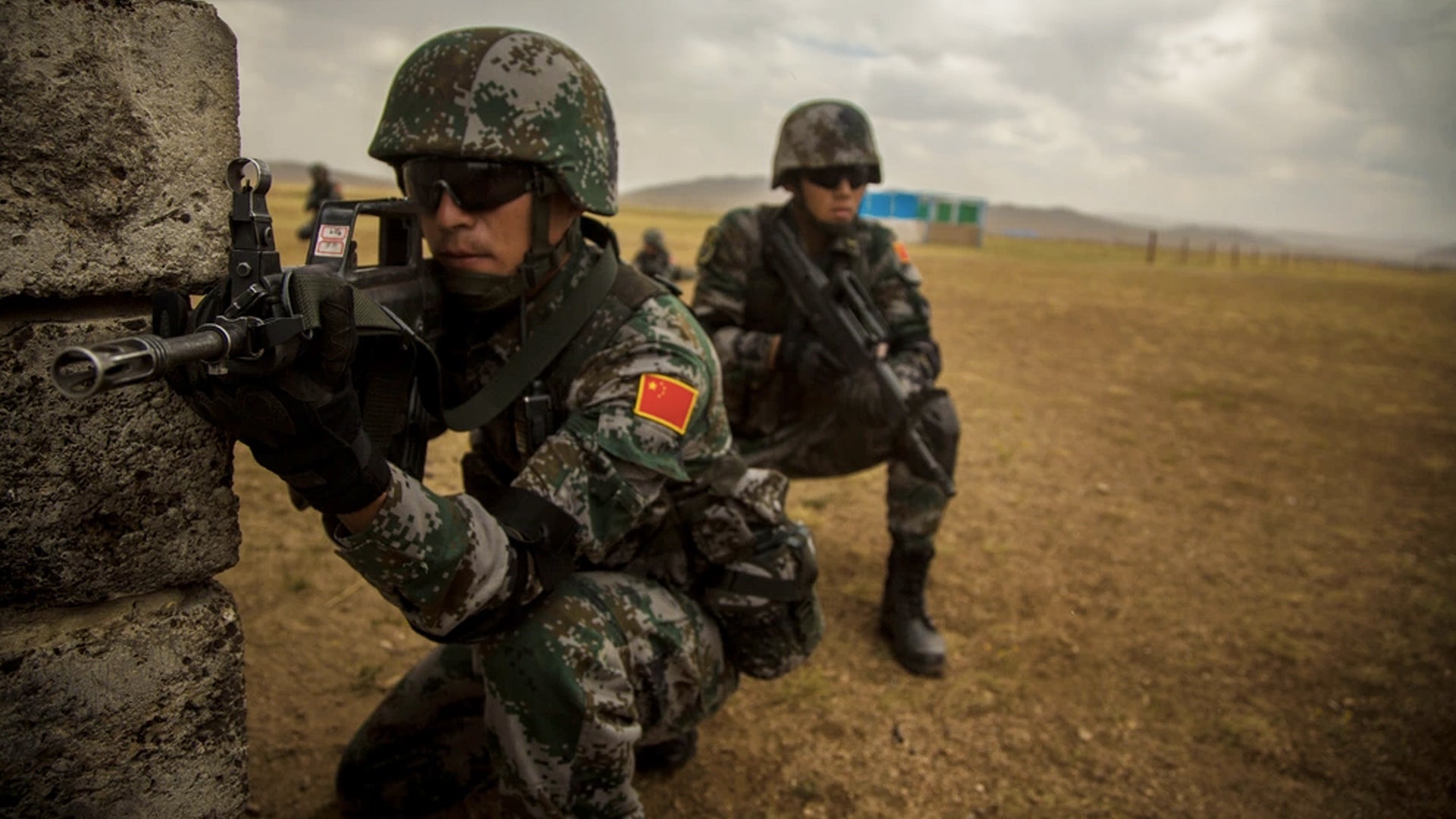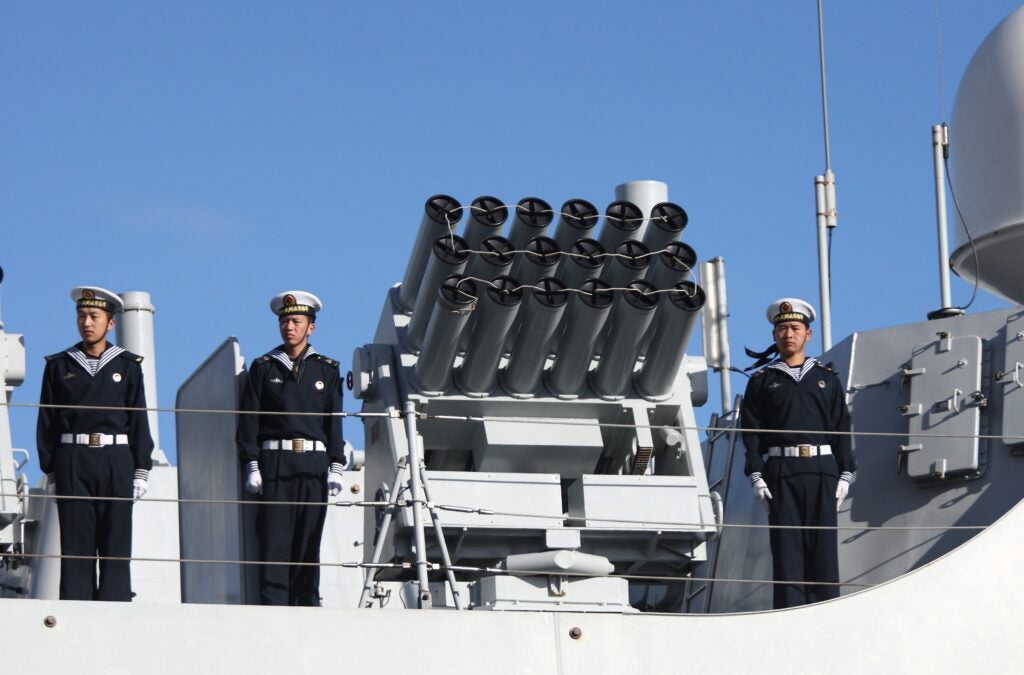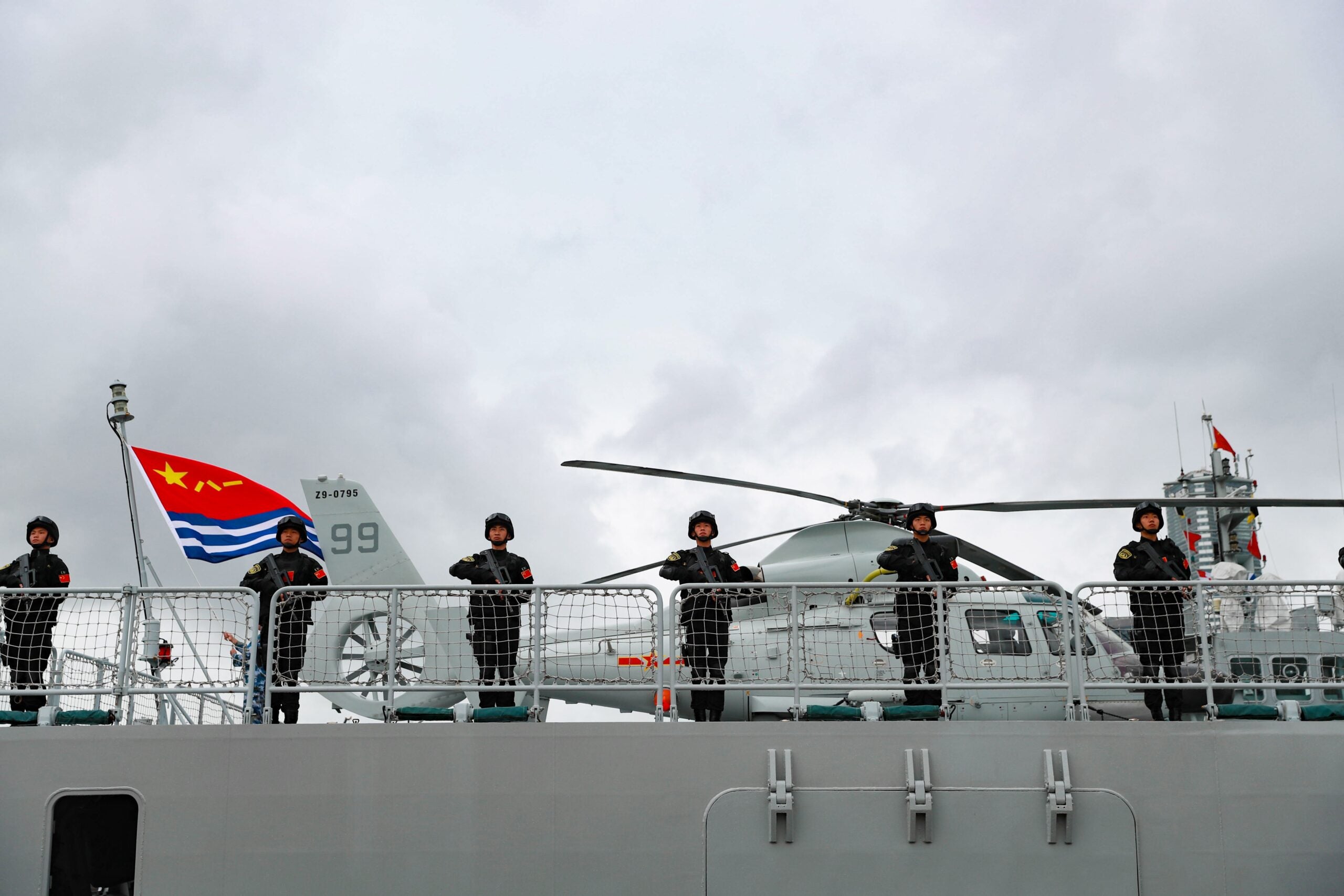In a conflict with China, the U.S. Air Force must be able to move people, food, fuel, spare aircraft parts and ammunition into their contested sphere of influence, regardless of anti-access/area denial (A2AD) defenses. But it cannot do that by relying on vulnerable bases in the Pacific, the far-too-few stealth platforms in its arsenal, or airmen trained for yesterday’s wars. In any future war with China, American bases in the Pacific will likely come under heavy and persistent fire from Chinese missile salvos, as recent war games and former senior officials have predicted. All of this could happen within the first few minutes of conflict, rapidly taking these bases and their considerable platforms out of the fight. To win against China, the United States must develop its ability to project power far from established bases using small, mobile teams of multi-capable sortie generation specialists. In short, we must focus on our logistics capabilities, and we must do so now, before a conflict begins.
The Imperative
In a war with China, the U.S. Air Force must remain unpredictable, mobile, and lethal because any weapons system or troop contingent that can be detected will be targeted and likely destroyed by Beijing’s vast missile arsenal. To that end, the United States will require decentralized command and control (C2) over small teams with access to fuel, munitions, and spare aircraft parts, but will also need to employ cheaper and more numerous unmanned, attritable platforms that can distract, engage and neutralize A2AD defenses, thus granting more maneuverability for U.S. forces. The Chinese Communist Party (CCP) is extremely wary of appearing weak, as indicated by their recurrent use of China’s “century of humiliation” as a rallying cry, and thus would be unlikely to instigate a war unless they were sure they would win. In this way, bolstering our capacity to project power in an area contested by the Chinese would serve as a deterrent to escalation and also send a clear message to current and potential allies in Asia.
The Chief of Staff of the Air Force, General Charles Q. Brown Jr, has pushed the force to “accelerate change” and focus on becoming “light, lean, and agile.” China’s arsenal of precision strike ballistic missiles makes it unwise to mobilize an “iron mountain” to support our forces as the United States has done in past conflicts with less powerful enemies. Thus much will depend on our ability to maneuver highly mobile teams utilizing prepositioned caches of materiel to generate sorties from distributed forward operating locations. The imperative and vision for this is outlined in the Air Force’s Agile Combat Employment (ACE) strategy and emerging Logistics Under Attack (LUA) concepts, but how they will be accomplished is left intentionally vague to allow leaders in the field room to maneuver.

The basic idea is that a small team should be able to land in an austere location and rapidly generate aircraft sorties before departing to repeat the process over and over again. It will be messy, and aircraft will be lost — something that is difficult for many American leaders to imagine, let alone prepare for. In facing a peer adversary like China, we won’t be afforded the safe havens our airmen have grown accustomed to, and we won’t be able to recover all aircraft that breaks down because China’s large constellation of surveillance satellites and drones, coupled with their arsenal of A2AD systems make everything detectable and targetable. This magnifies the importance of rapidly procuring attritable unmanned aircraft with strike capabilities that can distract, engage and neutralize Beijing’s A2AD systems. This need for mobility also requires the Air Force to modify its supply chain in anticipation of conflict.
A Web of Supplies
History has shown us that poor logistics planning will hamper any military effort. This will be amplified in a conflict with China because of the distances that must be traveled.
To effectively execute ACE operations, we will need to have prepositioned fuel, munitions, and spare aircraft parts in multiple discrete areas within the Indo-Pacific area of operations that can be stored with minimal footprint or upkeep and only employed in the event of war. This will require significant planning already being undertaken by Pacific Air Forces, resources allocated by Congress, and actions from the State Department to coordinate site specifics with host nations. This will also require an expansion of cooperation with American industry, which is eager to assist the military with cutting-edge technology, but often dissuaded by the arduous process required to secure funding, as recognized by a February 2022 DoD report and a Congressional Research Service Report from 2019. Adapting technologies like artificial intelligence and machine learning for wartime scenarios will give commanders in the field greater flexibility and keep more Americans out of harm’s way.
One such idea my team at Grand Forks Air Force Base in North Dakota has been working on with industry partners involves a refueling system that lies dormant until activated by a landing American aircraft. This standalone system would use a built-in AI interface to identify the airframe and its configuration, then refuel it autonomously. The system, when fully realized, will fit comfortably in a 20-foot shipping container with up to 10,000 gallons of fuel and require no human interaction after initial setup. Imagine the flexibility the combatant commander would have if he knew there were dozens of small, strategically-placed fuel caches in countries neighboring China that could detect and rapidly refuel American aircraft, with minimal footprint and without risking more American lives. This would give him the ability to launch aircraft from farther away, knowing that they could refuel en route or on the way back, ultimately making mainland China vulnerable to more attacks launched from outside the range of their A2AD systems. How much would a demonstration of that technology serve as a deterrence to Chinese aggression?
This is just one example of a problem that grassroots Air Force logisticians and American companies are solving using innovation and emerging technologies. To make these ground-up solutions a reality, the funding process needs to be streamlined to expedite the time it takes to go from idea to development and adoption. The United States cannot afford to be unprepared for peer conflict, because we won’t have the time to build up our industry and technology as it has in past wars.
Streamlining Innovation
Why not establish an innovation program office that reports directly to the Chief of Staff of the Air Force (CSAF) and whose sole purpose is to collect and accelerate innovative initiatives from the field that can be funded by an Air Force innovation fund? This would be similar to the initial AFWERX concept that reported directly to the VCSAF, but better marketed and pushed out to the field so as to inspire more grassroots ideas. The CSAF could chair a board with commanders of Major Commands and Combined Forces Air Component Commanders (CFACC) from each Combatant Command, which on a quarterly basis would rack and stack a list of innovation initiatives and fund everything above a predetermined cutline using multi-year funds. The list could be published to the field and accompanied by a public relations campaign. Coming from the CSAF’s office, these innovations will become a priority for everyone in the Air Force and drive visibility, funding, and manpower to truly game-changing projects. We need to create innovators at the lowest level, and running a sustained, top-down campaign to highlight and accelerate innovation will go a long way toward motivating airmen in the field.

This will certainly require updates to the Federal Acquisitions Regulation (FAR), but it is common knowledge among the services that such an overhaul is long overdue. A 2020 report from the National Security Institute bemoaned the “federal government bureaucracy [that] makes it harder for commercial firms to do business in the federal market.” Even the DoD’s Office of Small Business Programs’ website emphasizes that “patience, persistence and an in-depth understanding of federal acquisition rules” is required to win a government contract, which “typically takes at least 18 months of planning” before the first contract is awarded. Instead of creating barriers for businesses with innovative ideas and products, the DoD should be making it easier to partner with them.
I can recall multiple occasions over the last ten years that senior leaders (General Officer or Senior Executive Service) told a group of us younger officers that the FAR was “our problem to solve,” but didn’t elaborate further. Getting the FAR updated will require Congressional action, which is no small task, but our national security is at stake. And to those who suggest the DoD is simply not using the authorities in the FAR correctly, I ask; what are you doing to educate our decision-makers so they can make better use of the existing governance? We need to accelerate the necessary changes to the acquisitions process with the senior leaders we have now because if we wait, it will be too late.

Cultivating Multi-Capable airmen
When I was stationed at Osan in the Republic of Korea we trained and prepared our airmen to “fight tonight” if the need arose. We need to do the same at a larger scale, in preparation for potential conflict with China. The U.S. Air Force will need airmen who are multi-capable and sortie-generation specialists, trained and on standby to “fight tonight” under the ACE construct because a war with China has the potential to begin and escalate quickly. The support teams we send out will suffer losses, but if the airmen are trained to be multi-capable, they will be able to fill in holes more readily than airmen only trained in their specific area of expertise. Having multi-capable airmen ensures our teams are more interoperable and reduces single points of failure.
Certainly, we will need well-trained pilots or intelligent autonomous drones, but if we don’t develop our support airmen then those aircraft will be sitting ducks, unable to bring the fight to the enemy. Training our airmen to become multi-capable and to operate in small units with a minimal footprint will pay dividends during a conflict when communication is degraded and our teams have to be innovative and self-reliant in pursuit of the overall objective.
The process of cultivating multi-capable airmen cannot begin at the onset of fighting, which is why the CSAF has emphasized the importance of training our airmen now on “diverse foundational skills that enable them to operate in a contested, degraded, and operationally limited environment with minimal support” because doing so will enable our “airmen to execute distributed operations that increase survivability while generating combat power.” (AFDN 1-21) Leaders at the lowest level in the Air Force can implement this training and help their airmen understand the importance of becoming multi-capable.
Conclusion
A war with China would be the first large-scale peer engagement the United States has had since World War II, and the speed at which it could escalate makes it essential for the Air Force to lay the groundwork for success now. To prepare for conflict, the U.S. Air Force must streamline innovation, build a web of resupply points, and cultivate multi-capable airmen who are ready to rapidly respond to any potential escalation from China. We must be prepared to fight tonight, or we risk losing tomorrow.
The views and opinions expressed in this article are solely those of the author and do not reflect the official policy or position of the Air Force, the Department of Defense, or the United States government.
+++
Major David Geaney is the Director of Operations for the 319 Logistics Readiness Squadron at Grand Forks AFB, North Dakota. He has multiple assignments and deployments to the Middle East and Pacific region. His articles on China have appeared in the Journal of Indo-Pacific Affairs, Foreign Policy, and Defense News.
